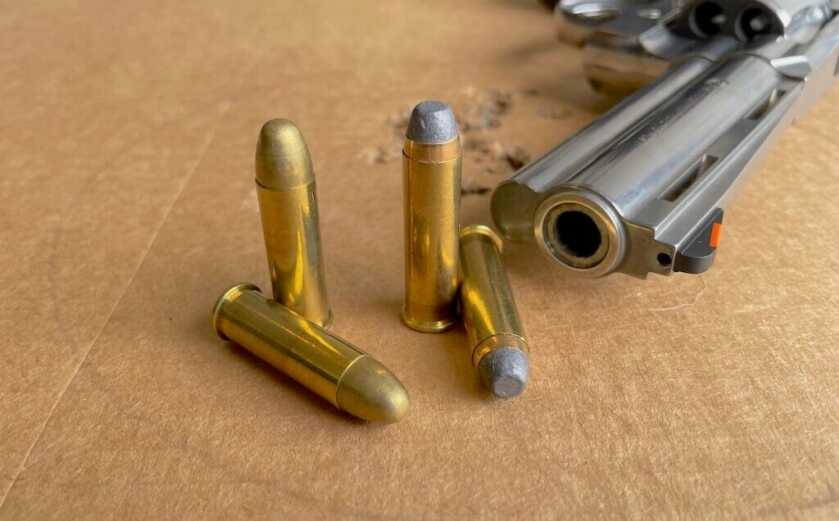
Estimated reading time: 7 minutes
We all know that different brands of ammunition and different bullet weights each have a different POI (Point Of Impact). Even when using the same POA (Point Of Aim) out of the same gun. You have probably seen the difference in POI with 38 Special ammunition through your 357 Magnum revolver. The rounds never hit in the same place. Why is that?
Table of contents
Ballistics Math
We all know that a revolver chambered in 357 Magnum can also fire 38 Special, so shouldn’t the bullets—if they are the same bullet weight—hit in the same spot? The short answer is no and the reason for the difference is speed or more precisely muzzle velocity. I wish my high school teachers used ballistic problems back in the day, rather than the “two trains leave the station” problems. I would have paid more attention.
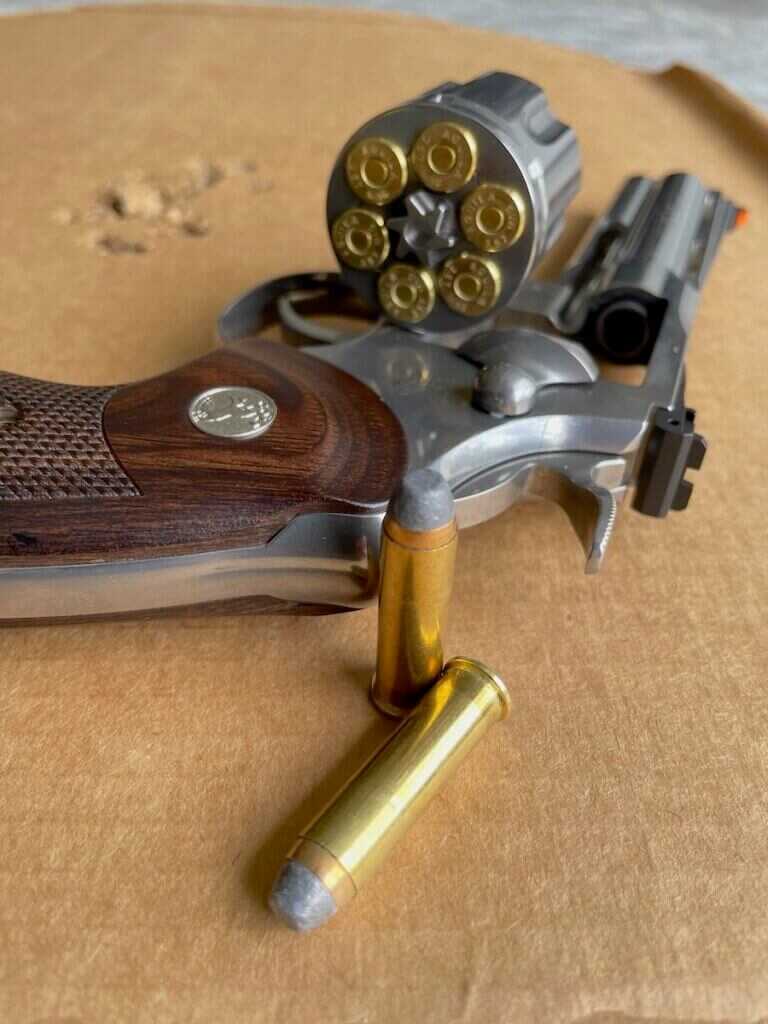
The 357 has a muzzle velocity roughly 500 fps faster than the 38 Special. It is also about twice as powerful as the 38 Special, but that’s energy; let’s get back to velocity. The bullet from a 38 Special cartridge moves slower and takes more time to move through the barrel. We are talking milliseconds here. The faster 357 Magnum bullet screams out of the barrel compared the 38 Special and the POI is the POA, assuming the revolver is sighted in for the 357 Magnum ammo.
When you fire the same bullet weight 38 Special out of your 357 Magnum where do you think the bullet will hit? Will the 38 Special hit high or hit low? The answer is more than likely the 38 Special will hit high. It’s a speed thing and before we get into that let’s take a look at both calibers.
38 Special vs 357 Magnum
The bullet diameter for both the 38 Special and 357 Magnum are the same at 0.357 inches. Bullet weights can be the same, too. Both calibers play well with bullet weights ranging from 110 to 158 grains, though there are other lighter and heavier bullets for these two calibers. There are specialty defense loads for 38 Special as light as 50 grains and the 357 Magnum can be loaded up with 180-grain bullets. Where the two calibers differ is case length. The 38 Special has a case length of 1.55 inches and the 357 is longer at 1.59 inches.
READ MORE: David Hogg Abandons Pillow Company Two Months After Starting It
That 0.04 inches may not seem like a lot, but it speaks volumes. Volumes mean more powder capacity in the case. More propellant also means the 357 has an average pressure of 45,000 psi compared to the 38 Special which has 17,000 psi. The difference between the 357 Magnum vs the 38 Special is easy to remember—the 357 case is longer, the 357 has a higher muzzle velocity, and the 357 can handle heavier bullets.
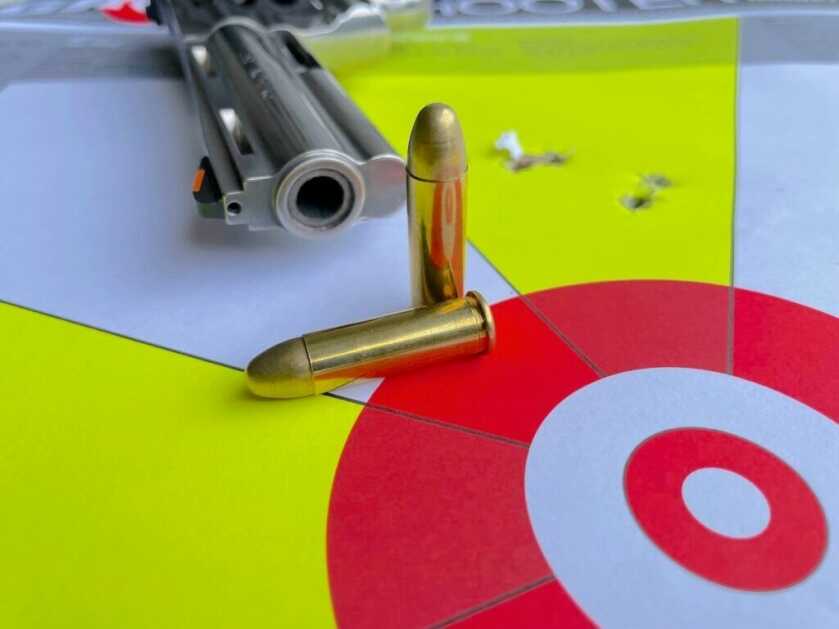
38 Special vs 357 Magnum Ballistics
The 38 Special and 357 Magnum are two totally different calibers when it comes to power. If the 38 Special was a hot pepper it would be a mild to medium Jalapeño while the 357 Magnum would rate a Habanero at extra hot. The 357 Magnum is much faster and delivers more punch, it also has more recoil. Take a look at Federal American Eagle ammo in both 38 Special and 357 loaded with a 158-grain bullet. The 38 Special comes out of the barrel at 770 fps while the 357 Magnum roars out at 1,249 fps. That’s nearly 480 fps faster.
Muzzle energy from the 38 is 208 ft-lbs, while the 357 has 539 ft-lbs. That’s over 330 ft-lb more energy. So what’s the trade-off between the 38 Special and 357 in terms of power? In a word: Recoil. The recoil of the 357 Magnum is stout, especially in lightweight snub nose revolvers.
38 Special +P vs 357 Magnum
There is a jump in velocity between 38 Special and 38 Special +P ammo. Plus P ammo is hopped up with more velocity and more pressure than the standard 38 Special, but not as much as a 357 Magnum. Plus P ammo uses the same case size as the 38 Special just a faster-burning propellant that increases speed and pressure.
Looking at more Federal Premium loads the 38 Special American Eagle round loaded with a 130-grain bullet has a muzzle velocity of 890 fps and 229 ft-lbs of muzzle energy. Personal Defense Hydra-Shok 38 Special +P loaded with a 130-grain JHP has a muzzle velocity of 900 fps and 234 ft-lbs of energy. The power in +P loads approaches 357 Magnum levels but doesn’t quite get there. Think of the 38 Special +P as in-between the power of the 38 Special and 357 with less felt recoil than the 357.
Available on GunsAmerica Now
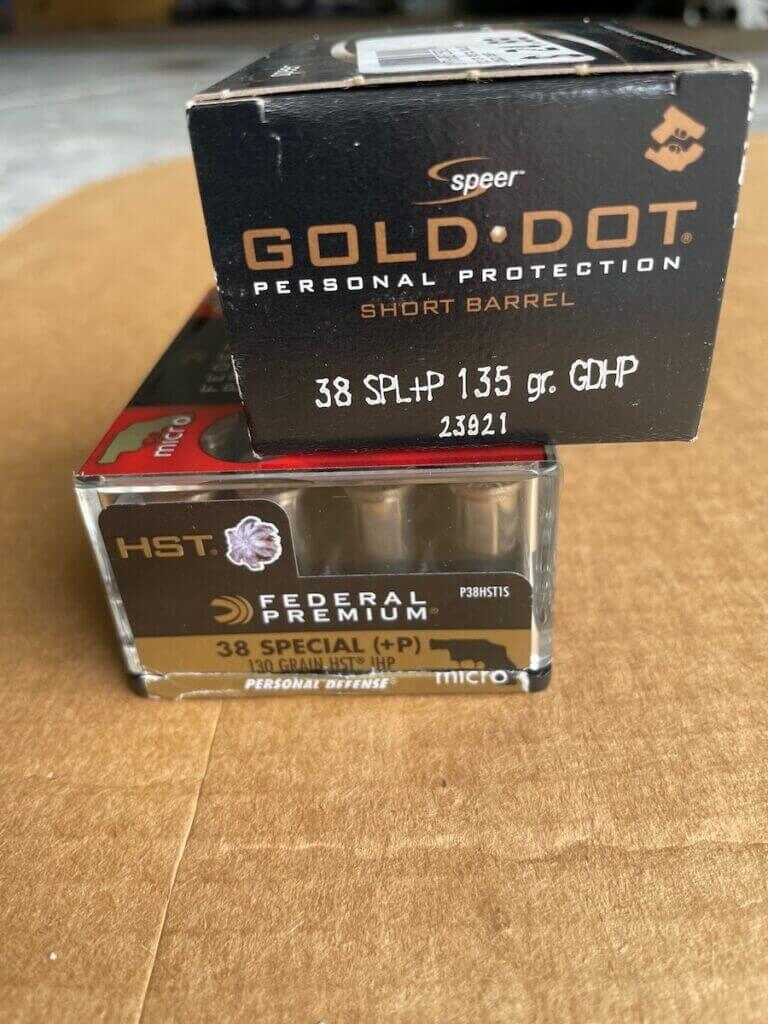
38 Special Ammo Hits Higher
If your revolver is dialed in on 357 Magnum ammo, 38 Special ammo will more than likely hit higher when using the same POA. The reason is because the 357 Mag bullet has a much faster velocity than the 38 Special and leaves the barrel faster. Since 38 Special ammo has a slower velocity, the revolver begins to flip up from recoil before the bullet leaves the barrel and will hit slightly higher when using the same POA. The difference where the two loads hit can be significant.

To prove this hypothesis, I ran six Aguila 158-grain 357 Magnum loads and six Armscor 158-grain 38 Special rounds for through a 4.25-inch barrel Colt Python at 15 yards. I used a my range bag as a rest and a Group Shooters target from Thompson Target. My POA was 12 o’clock on the red bullseye. The front sight of the Python covered the bullseye. The 357 rounds hit the red bullseye—ok I pulled two shots, but you get the idea. I then fired the 38 Special rounds using the same POA and you can see the rounds hit high, above the red bullseye.
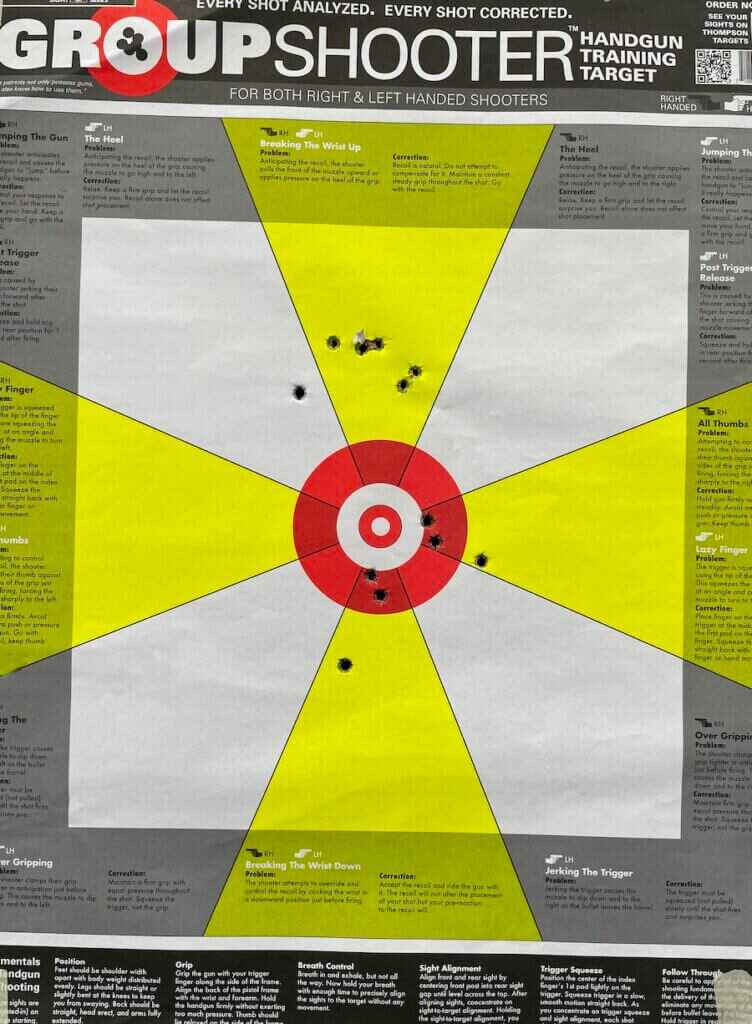
At close range that difference may not be a big deal, but at farther distances it can be more significant. All the more reason to make sure you know where your ammo will hit.
Which is Better, 38 Special or 357 Magnum?
If you lean toward more power then the 357 is the better cartridge. Perhaps you lean toward accuracy? Maybe 38 Special is your choice. Maybe your revolver likes 38 Special +P and your choice is middle of the road. Regardless of what caliber you choose to conceal carry, remember when you switch cartridges between the 357 Magnum, 38 Special +P and 38 Special you will also be switching point of impact. Now your homework: Two 0.57-inch diameter bullets leave a revolver barrel at different speeds…
*** Buy and Sell on GunsAmerica! ***












I could come up with a very long list of reasons why I should own my ARs, but maybe the most compelling one is that I WANT them! We still enjoy some of our most treasured liberties in our nation, at least for the time being. We did not uphold our oath or appropriately use our ARs (and other weapons) when it were necessary to do so, if we are ever down to possessing only those items that we “need.” I would sooner die standing than live on my knees in order to prevent such a nightmarish existence. I bow down to Christ in humility, but never to man.
Ok, the 38 special hits high at 15 yds. How far downrange is this negated by bullet drop as velocity decreases. That is, where do equal loads intersect each other ?
F
I own a Ruger convertible Blackhawk 5.5″, .357/.38 and with a cylinder change, 9mm All of my shots are left of bullseye ~3/4 inch and never high or low the left drift has to do with my being 70 Years old and the wrists are a bit weak, In Fact the 9mm is the more comfortable to shoot, but all the same I don’t have an aim-point problem, I carry this as a ranch gun and fire using “quick-point” as trained in the military, I have shot coyotes and wildcats, hogs and Dogs, and in fact tend to gut shoot everything I point at (stray dogs are a predator and my sheep and cattle are my livelihood ) so at $0.19 a shot for 9’s and $1.35 for magnums versus $300.00 for a sheep, and $2500.00 for a steer, I stay in practice and the neighbors don’t let their dogs run loose, But the point was that I do NOT seem to have that “Flyer” problem with the .38 special, and the 9 is nearly as fast as the magnum again no POA problems, Possibly the barrel length and the western style frame helps, also the weight of the pistol is more in line with the cartridges, I run 147 Gr 9mm FMJ 158gr 38/357 JFP, the heavier bullets tend to have less over-travel, making the neighbor safer, and better knockdown,…. the only issue is with CHEAP 9mm which tends to be Varnished and sticks in the cylinder ( Monarch is the worst ) as long as I stay with military Tula, speznatz ammo all is good, the 38 and 357 are all US made and no sticking
8th edition Hornady reloading manual lists .38 Special maximum case length 1.155″ and .357 Magnum maximum case length 1.290″. That’s .135″ difference. I read the article twice to make sure of the measurements. I get nit-picky when it comes to ammunition reloading.
Nice easy to understand article
I found it very informative. I have a 39 special +p. And have access to a 357. Everything stated in the article is accurate.